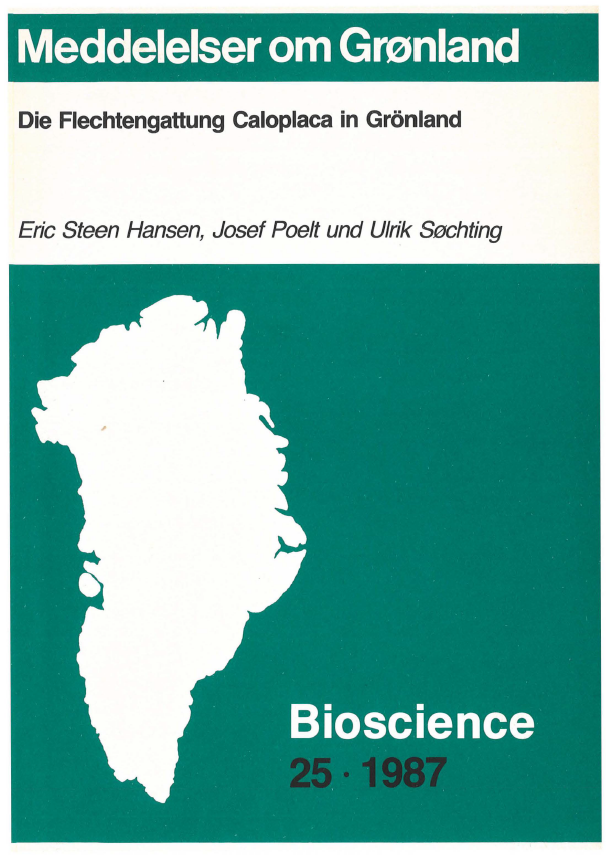Die Flechtengattung Caloplaca in Grönland
DOI:
https://doi.org/10.7146/mogbiosci.v25.142359Abstract
The lichen genus Caloplaca is revised on the basis of specimens collected by J. Poelt and H. Ullrich in 1982 and 1983 in West Greenland, as well as all Greenland material in the herbaria of Copenhagen (C) and Oslo (0). A total of 43 species and two species of unclear affinity is described and discussed. Details are given about their ecology and the distribution of nine species is mapped. The taxonomy of some species-aggregates, including Caloplaca pyracea coll. and several black fruited saxicolous forms, is considered still unclear. A diagnostic key to all taxa is presented.
One species and three varieties are described as new: Caloplaca psoricida, C. citrina var. soropelta, C. jemtlandica var. cerinosora, C. lithophila var. elaeophora (with oil paraphyses). Some previously differentiated species growing on different substrates are united: Caloplaca stillicidiorum with C. cerina, and C. cinnamomea with C. ammiospila. Variation in morphology and colour is discussed with spccial cmphasis on the impact of the arctic environment. In several species, e.g. Caloplaca exsecuta and C. tiroliensis, a significant blackening of the apothecium due to anatomical and chemical changes is described.
An attempt has been made to classify the Greenland and some European species in natural infrageneric groups. lt is concluded, however, that a clear cut natural subdivision of this large genus is not possible at present.
Notable new finds from Greenland are: Caloplaca trachyphylla, which is previously reported from western North America and Central Asia, C. anchon-phoeniceon, C. cacuminum, C. insularis, and C. saxifragarum, which are known from the Alps, and the temperate species C. decipiens, C. lactea and C. saxicola. Six species of Caloplaca are recorded as parasitic on lichens: Caloplaca anchon-phoeniceon (on Aspicilia), C. cacuminum (juvenile specimens on crustose lichens), C. castellana (mainly on Placynthium and other cyanophili), C. insularis (on Aspicilia), C. magni-filii (on Lecidea nigroleprosa) and C. psoricida (on Psora rubiformis).

Downloads
Published
Issue
Section
License
Coypyright by the authors and the Commision for Scientific Research in Greenland / Danish Polar Center/Museum Tusculanum Press as indicated in the individual volumes. No parts of the publications may be reproduced in any form without the written permission by the copyright owners.

